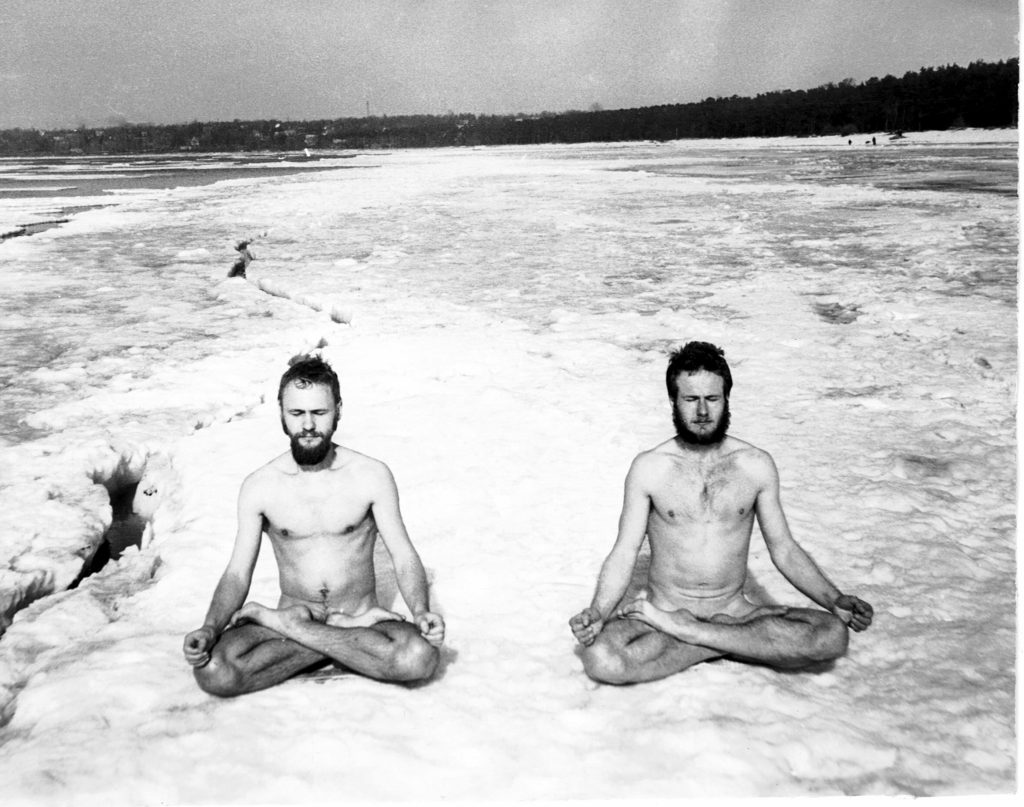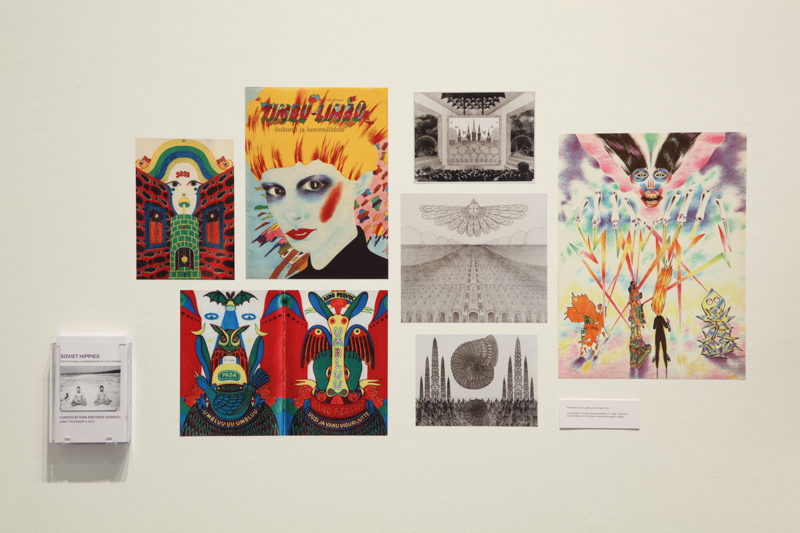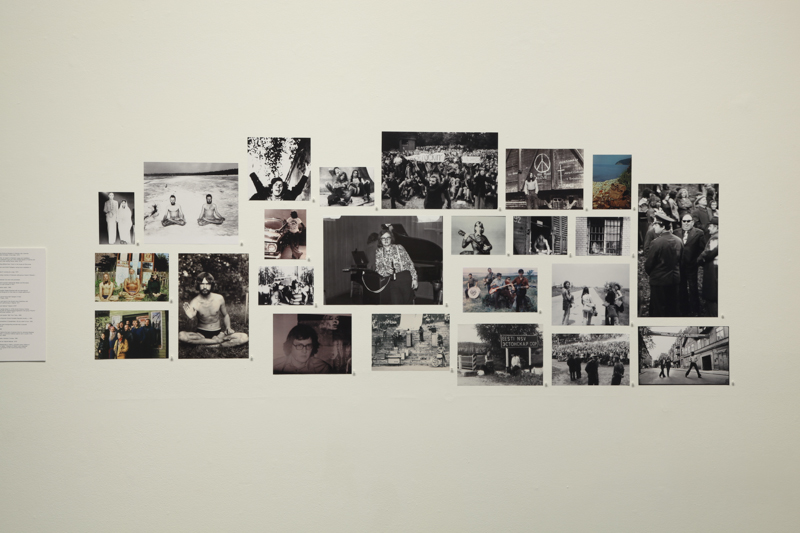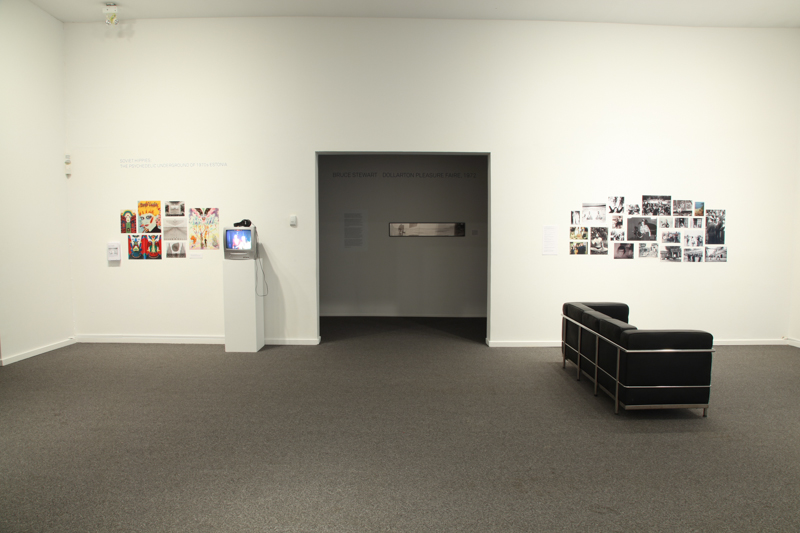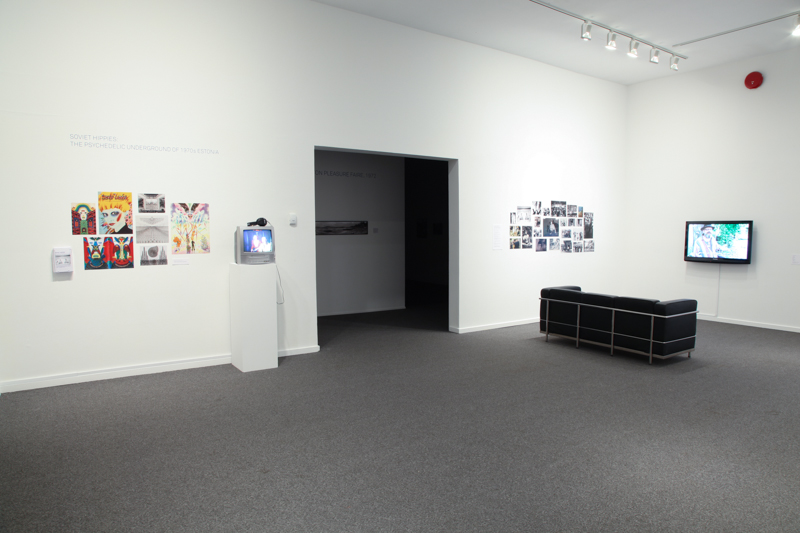Soviet Hippies: The Psychedelic Underground Of 1970S Estonia
Curated by: Kiwa and Terje Toomistu
This exhibition provides insights into alternative cultural activities in Estonia under the Soviet regime. The curators conducted an indepth anthropological study of the Estonian underground for this exhibition of film interviews and documentary materials featuring individuals from Estonian music, art, and literature worlds who ignored or opposed the official socialist code of behavior. These manifestations of the hippie movement behind the Iron Curtain give a different perspective on global hippie culture and Soviet times.
As the curators have written:
“Coveting Western freedoms and spiritually inspired by the cultures of the East, a counterculture of flower children developed in the Soviet Union, which was disengaged from the official ideology and expressed itself through rock music, the cult of love, pacifism, actual and cosmic travel, and a physical appearance that was considered unacceptable for Soviet citizens. In Estonia, the so-called Soviet West, foreign radio broadcasts kept people updated on the happenings elsewhere in the world. Young minds were enthralled by iconic hippie-era albums from the West that were illicitly distributed and the knowledge that their contemporaries in the “free world” were rocking in the spirit of the slogan “Make love not war.”
The hippie movement in Soviet Estonia was not a clearly defined phenomenon, but rather an explosive youth culture with a perception of life that could unite vagabonds and academicians. However, the trend toward hippie fashions, long hair and great rock concerts was enough to make the Soviet authorities see a political threat that could subvert the regime. The more absurd the reality, the more fanatical Soviet flower power became. They created their own world in the shadow of harsh rules and repressions, and opposed the ruling system through symbolic expression.”
Kiwa (Kiwanoid as sound artist) is a multidisciplinary artist who lives and works in Tartu and Tallinn in Estonia. His work concerned with cultural codes extends from conceptual objects to total audiovisual environments, including painting, installation, video, performance, sound art, scenography, text and books. Exhibiting since 1995, his work has been featured in exhibitions and festivals in Europe, America and Asia. He lectures at the Estonian Academy of Arts and has worked as a curator since 1999.
Terje Toomistu is a writer, documentary filmmaker and anthropologist, with interests in cross-cultural processes, queer subjectivities, and cultural memory. She is a PhD Ethnology student at the University of Tartu and this year was a Fulbright scholar at the University of California, Berkeley. She has co-written a novel Seven Worlds, 2009 about spiritualities in South America and is one of the authors of the documentary film Wariazone, 2011.
Their Soviet Hippies exhibition has been previously exhibited at the Estonian National Museum, Tartu; Moderna Museet in Malmö, Sweden, and Uppsala Konstmuseum in Sweden.
Events
Saturday, June 7, 3PM | Opening Reception
